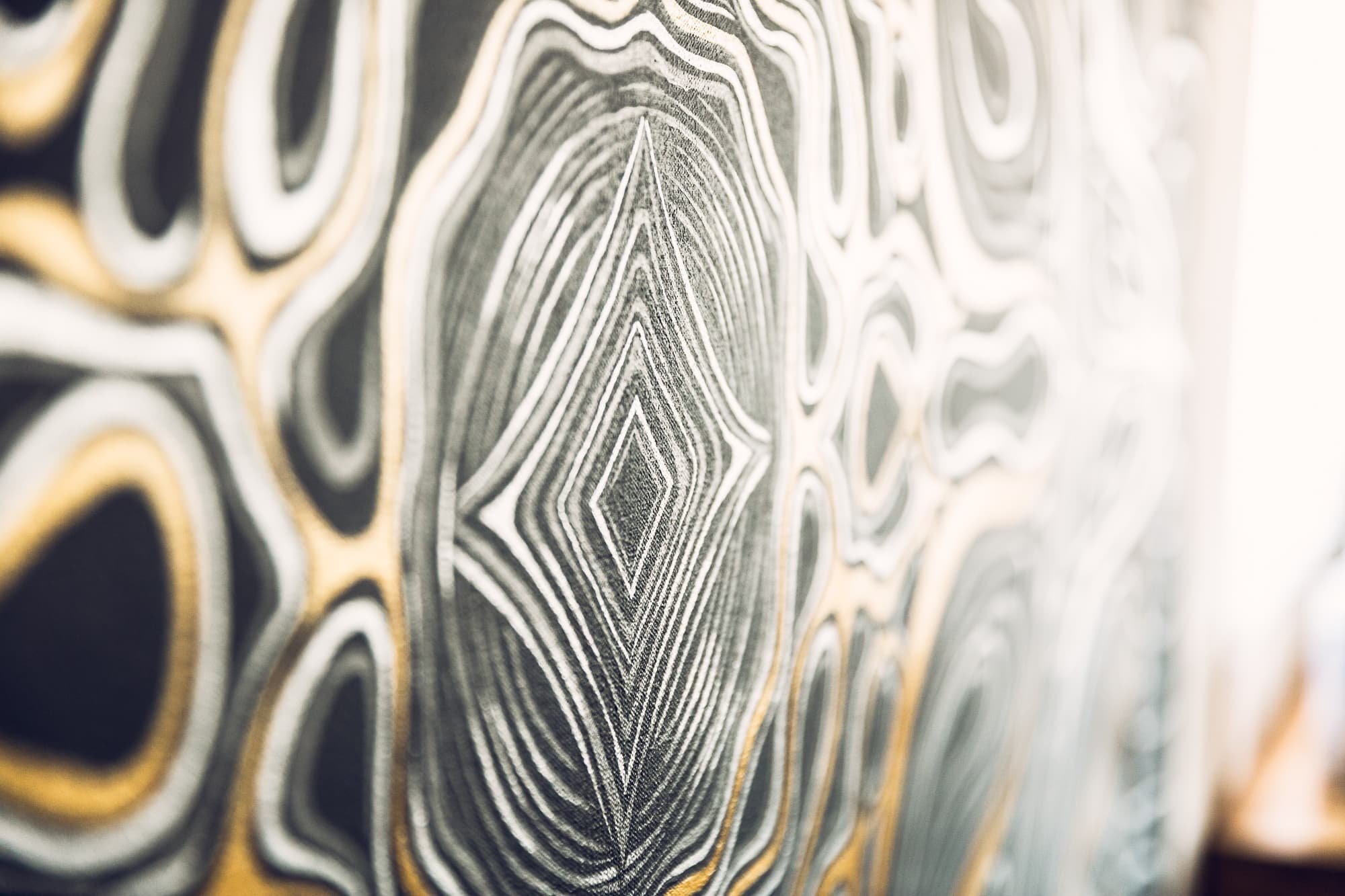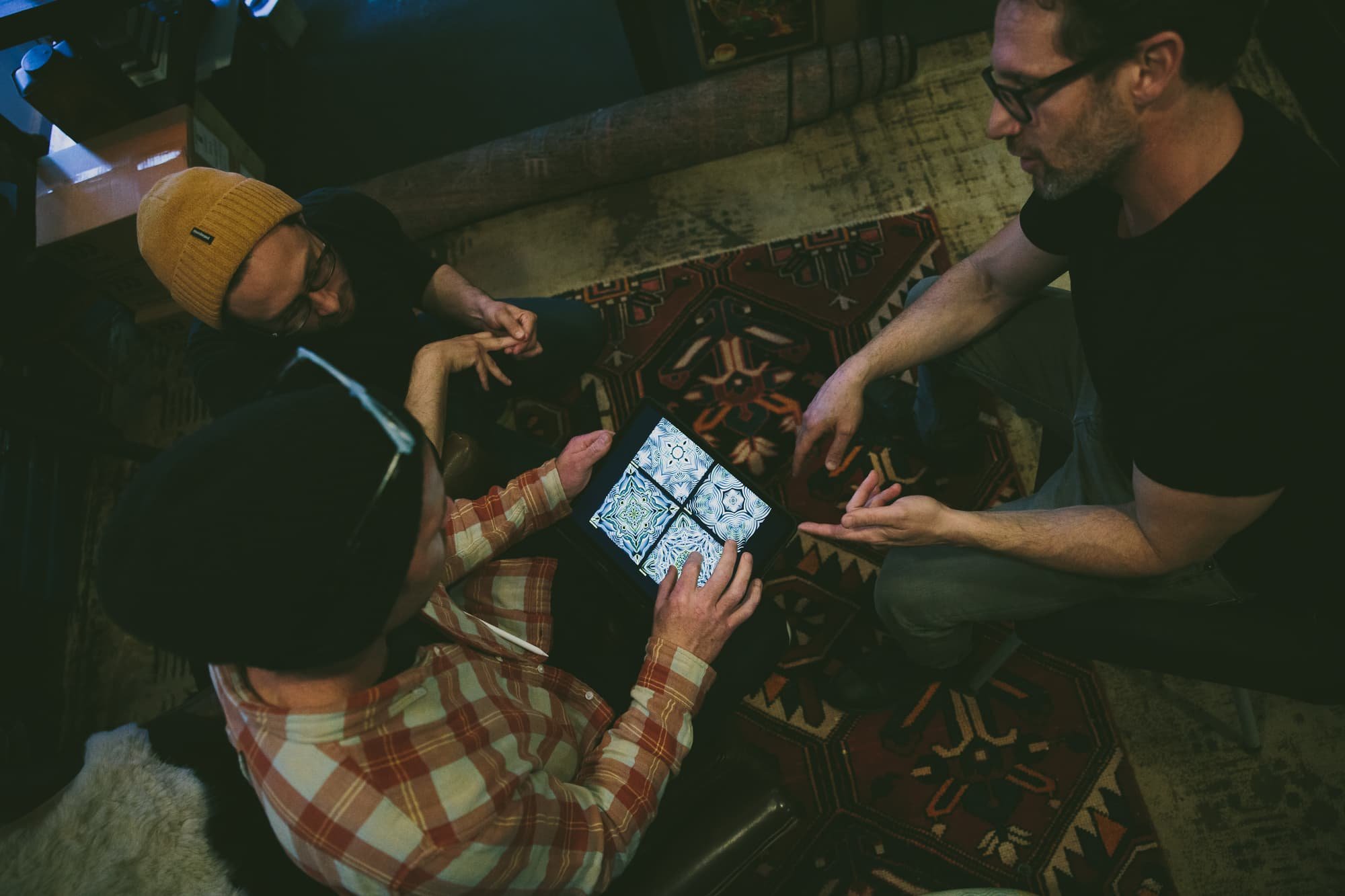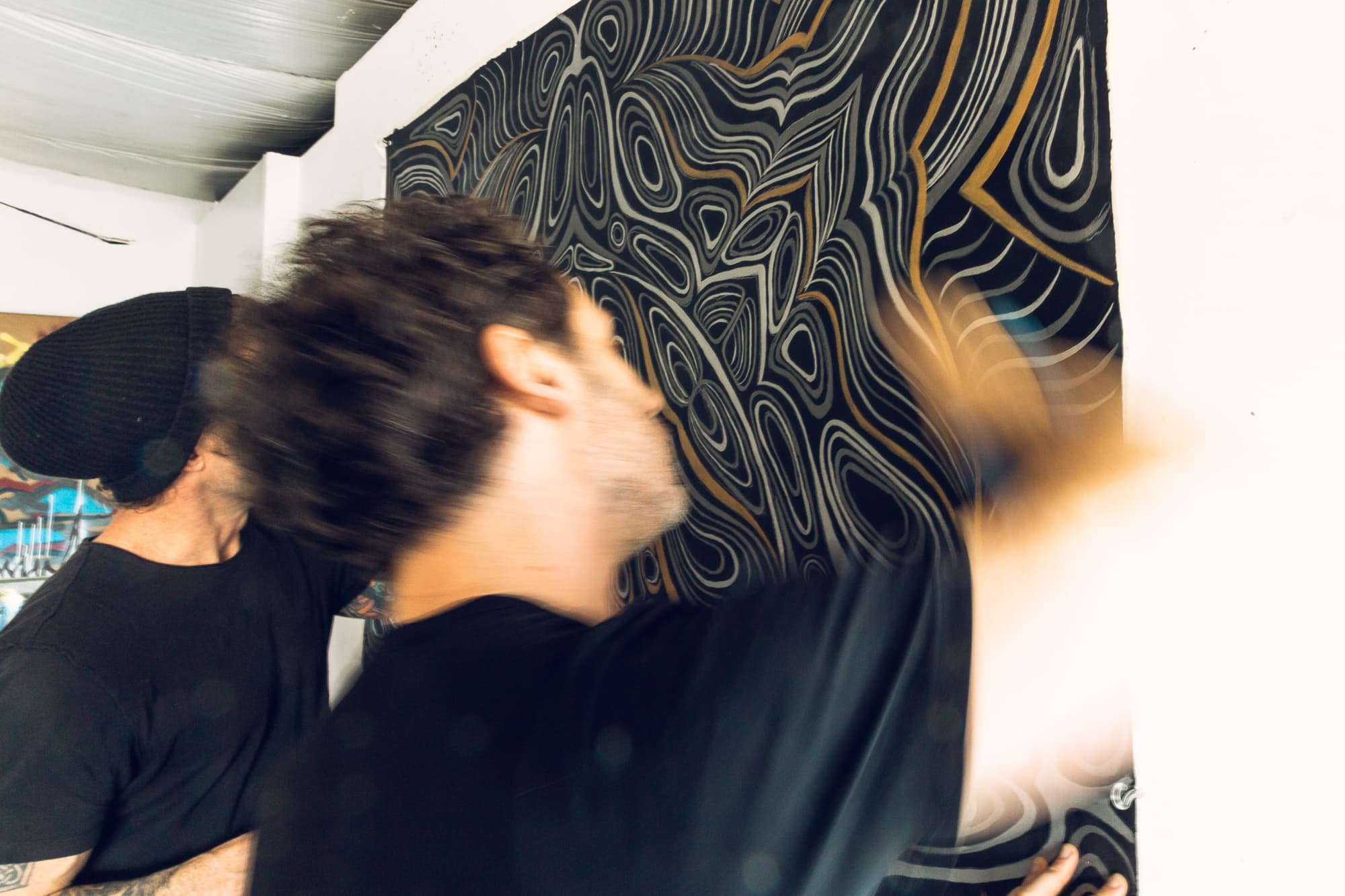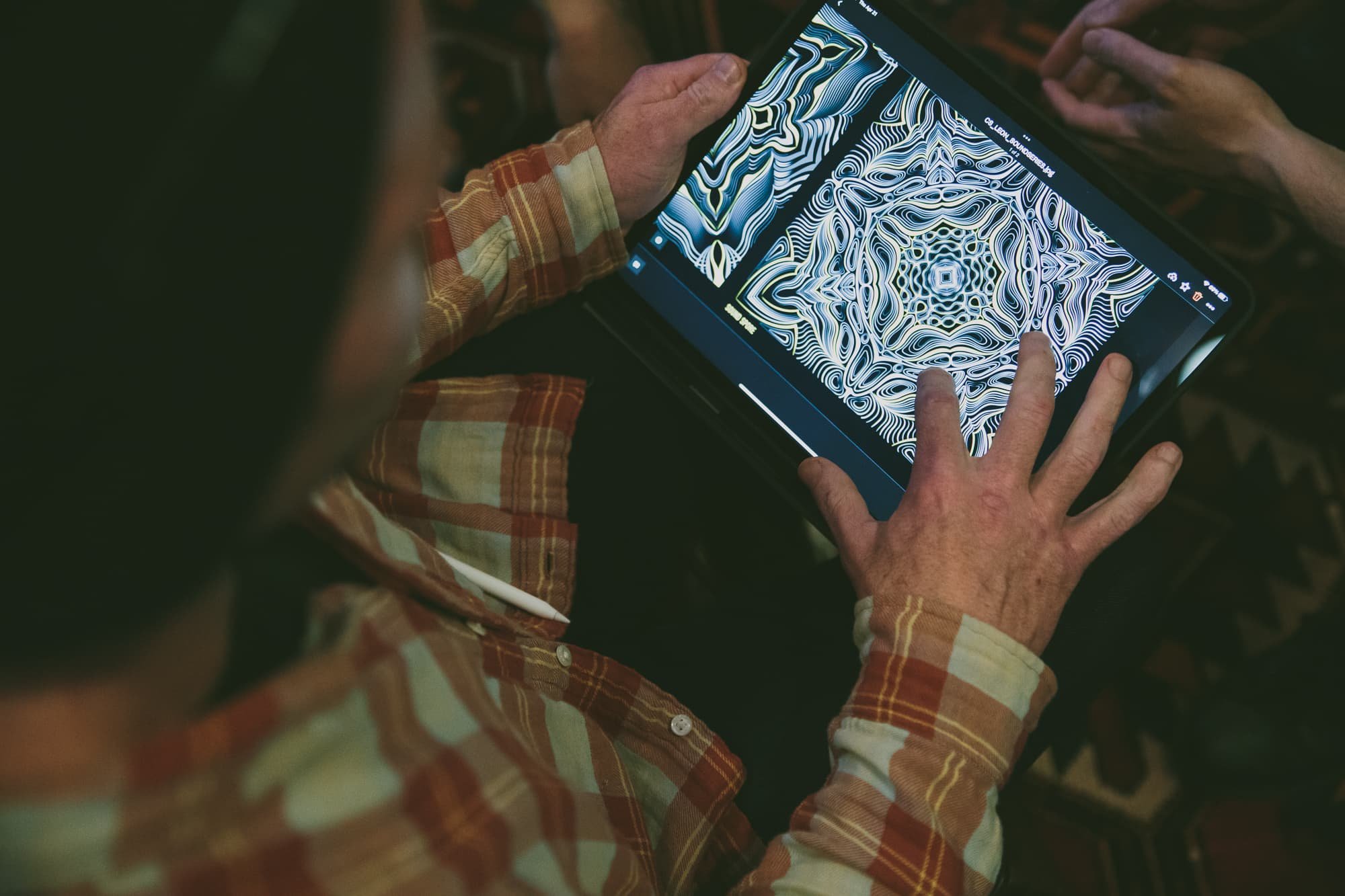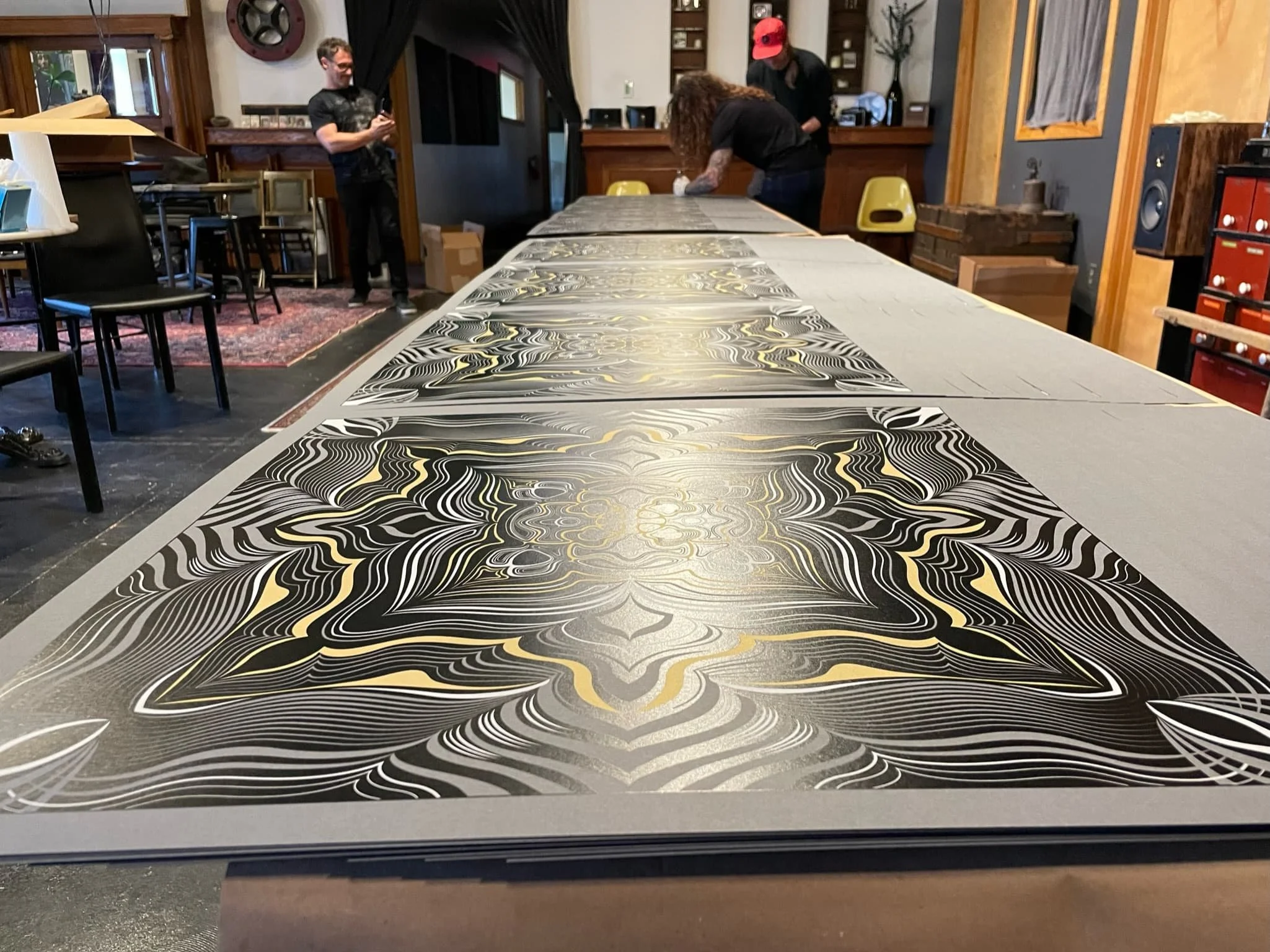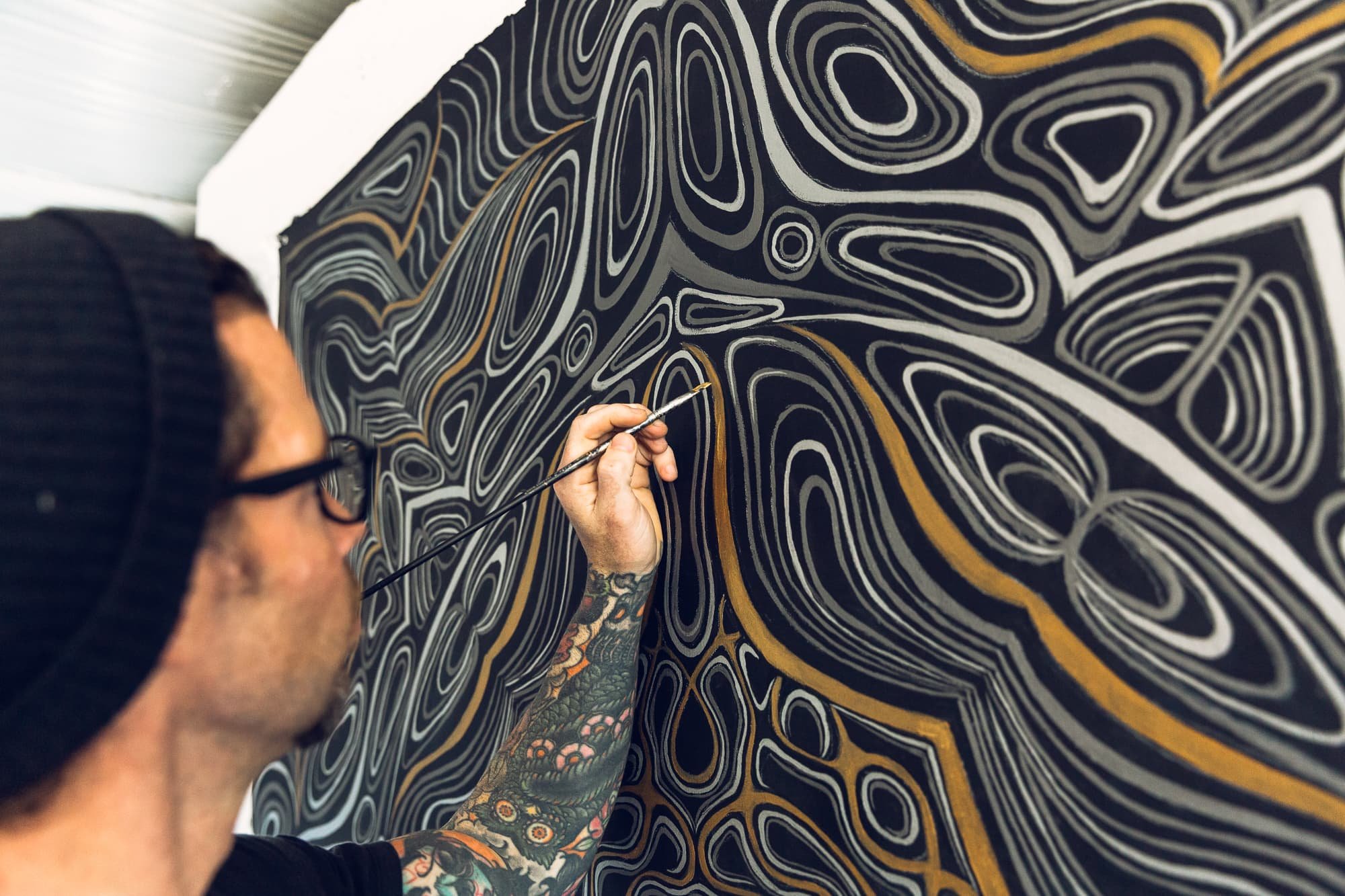Finding Balance in the Details: A Q&A with Chris Saunders on Leon’s 25th Anniversary Artist Collaboration
Visual artist Chris Saunders has been creating detailed, symmetrical designs for as long as he can remember. We sat down with him to discuss his life, his methods, and some of his most recent work: a series of sound-inspired mandalas commissioned by Leon as part of our 25th Anniversary.
Saunders’ Soundwave Series can be found in Leon’s latest Artist Edition of the Ente SoundTile, and as a limited-run series of signed prints at the online Leon Store.
Leon Speakers: Can you describe your work and philosophy? What mediums and themes do you like to use, and what do they mean to you?
Chris Saunders: My philosophy is balance. Balance with everything. I'm always trying to find the balance in everything I do. The amount of time that I spend on a piece, different mediums that I use—I like to do a lot of digital work, I like to do a lot of physical work, I like to paint giant, large-scale murals, I like to work on smaller paintings. I just always try to find a balance in everything I do, including trying other things and doing things that generally make me uncomfortable.
I think it's really easy to get into a comfort zone as an artist, with a certain style or a certain technique—pleasing people that follow your work—but I think it's really important to kind of step outside of that and try different things and step outside of the comfort zone and step outside of the normal balance of one side that you find to be a groove.
I think it's all about breaking the groove and finding a balance in that. I had some pretty powerful psychedelic experiences and I started to get these visions of these powerful animal deities—these lions and these tigers, and they were extremely potent and symmetrical and I kind of ran with these different totems. They were like these archetypal angelic animal deities that I was really obsessed with. That's what was coming to me a lot of the time.
Now, lately, I've really just been pulling back from even using subject material and just using more design in shape and form. I wouldn't say it's gotten any more simple. Every time I go to do a piece, I'm like, ‘Alright, I'm gonna keep this one nice and simple.’ It always ends up being somewhat complex with detail. The process is always changing. I do a lot of digital work, but I try to also always keep my hand sharp with painting and, and drawing and stuff like that. I personally love doing large-scale pieces…There's just something so gratifying about creating them.
A few years back, I used to live in this town called Ventura in California, and there was this giant wall downtown [in a] beautiful part of town. This wall was just empty for a while and I had a vision for a mural that I wanted to do there, and I'd go through this crazy process of applying for permits and getting the city behind it. Everyone was like, ‘What are you doing, dude? Why are you wasting all your time doing this?’ Finally I got it done and it just brought this element of beauty to that part of town where people would walk by it and they would just be absolutely frozen in their steps because it just transformed this whole part of this town and, and there's something about doing a large public installation where you're standing by a 40-foot by 120-foot size mural. There's nothing like it. It's awesome. It's amazing working really big because I feel like when you work at that scale, it just absolutely stops you in your tracks. It's a public art piece—anybody can have their own opinion about it…It's amazing. There's nothing like it. I haven't painted a mural in a few years. I really kind of miss it. But I'd say that's probably my favorite medium.
LS: Leon’s founder, Noah Kaplan (an artist himself), found a lion mandala you did and put it up in our Ann Arbor headquarters several years ago, but what was your first connection with Leon?
CS: There is a collective in Detroit called 1xRun, and they work with artists to distribute limited-edition print runs. Maybe 10 years ago, they reached out to me and we did a print run, and we ended up doing I think like eight or nine total. They did really well, and a guy ended up buying one of my prints, and that gentleman was a dealer for Leon in Colorado.
Around 2020 he reached out to me like ‘I have a guy that I think you should know and meet,’ And he set up a call with Noah. I felt so bad for him because we set up this call, and the second Noah and I started talking, we talked for like a good hour.
If you create a piece of art and you put it out there, you never know who it's gonna resonate with, and then later down the line, these insane collaborations can happen. That's kind of why I'm sitting here today. You gotta just make it and put it out there and just let the universe do the rest.
LS: What connections have you found between our work at Leon and your work as an artist?
CS: The thing that I love about Leon is the thread of art that runs so deep through everything that's done here, and everyone who works here—their appreciation for art and artists and the process. Noah, being a fine artist at heart, I appreciate how he sees the value of art and really strives to make it a part of the company's philosophy.
It's awesome working with other artists [at Leon] and just having the art component to what they do. They build these incredible products for people's homes—to listen to music—and that is such an art form in itself.
And then to bring another form of visual to the sound component and then to the actual, you know the way they build them is—it's so cool. I haven't seen anybody doing it with speaker systems or sound before, and it's dope. I love it. It's really cool and to be a part of it, I feel a lot of gratitude and I feel really honored.
LS: The process behind the four-part Sound Series sounds fascinating. Could you talk a little bit about your vision for the four pieces and how you ended up going about it?
CS: The intention behind them at the time when I designed them was that they were gonna be speakers, so I wanted the speaker and the visual to just be in alignment and just feel like one unit. And I wanted them to feel like sound and to look like sound, so that was the original intention behind all the designs.
Noah approached me and commissioned me to create four different designs that were gonna be used for these speakers, the Ente SoundTiles… He was like ‘I'm just gonna let you do your thing,’ So I just started listening to a lot of music and then I started watching a lot of these videos where people will take sand and they'll put it on top of a flat surface, and they'll run a frequency of sound through it and it will create this like beautiful symmetrical mandala pattern.
So I started watching those and listening to music, and then these visions just started coming to me for these like really beautifully intricately designed patterns that were inspired by different genres of music. I was looking at a lot of these videos and I just started drawing and sketching, and I sketched out like four different designs based on different music that I was listening to at the time, and then just evolved them, refined them, and, and that's how they got to where they are. They're definitely a visual representation of sound for me. I didn't want to use any subject matter in them. I just wanted them to be purely shape and form and very simple colors like golds and silvers and black. I really wanted the sound element to be incorporated with a visual element so you get the idea that it's emanating from the center and creating this mandala from sound frequency.
I always want my artwork to help people feel some kind of balance and to feel grounded through the chaos of it all. Everything is just like finding order in the, in chaos, you know what I mean? That's usually how I create art. It's always this extremely complex, chaotic puzzle. I just kind of allow my mind and creativity to like find some order and balance. If somebody gets pissed off when they're seeing it, great. If somebody loves it and feels some balance and comfort, great…Everyone's gonna have a different reaction to it, and I welcome that.
LS: Do you have any more exciting projects on the horizon?
CS: I've started experimenting more with sculpture and 3D printing. I'm really fascinated by it, and I really want to explore that medium a lot more, [with] smaller sculptures and then 30- or 40-foot-high sculptures. It's just a whole new way of creating art and I'm still learning about it.
I'm excited about some of the things that I can't talk about too much—there's some cool stuff in the works. Being an artist is an incredibly challenging thing to do, but I'm so grateful for all these opportunities that keep happening. I find that if I just keep doing what I do and not thinking about it too much and just create and make, then the process and the evolution just happens naturally rather than thinking about trying to make it right or do this or do that. I just focus on creating, and I think the universe rewards that.
Visit www.leonspeakers.com/chris-saunders to learn more about the Leon x Chris Saunders Artist Edition Collection for the Ente SoundTile and go to www.chrissaundersart.com to see more of Chris’s work, or follow him on Instagram @CHRISSAUNDERSART
Photos by Misty Lyn Bergeron. Find more of Misty's work at www.mistylyn.com or follow her on Instagram @mistylyn
Video & Additional Photos by Matt Wilken
